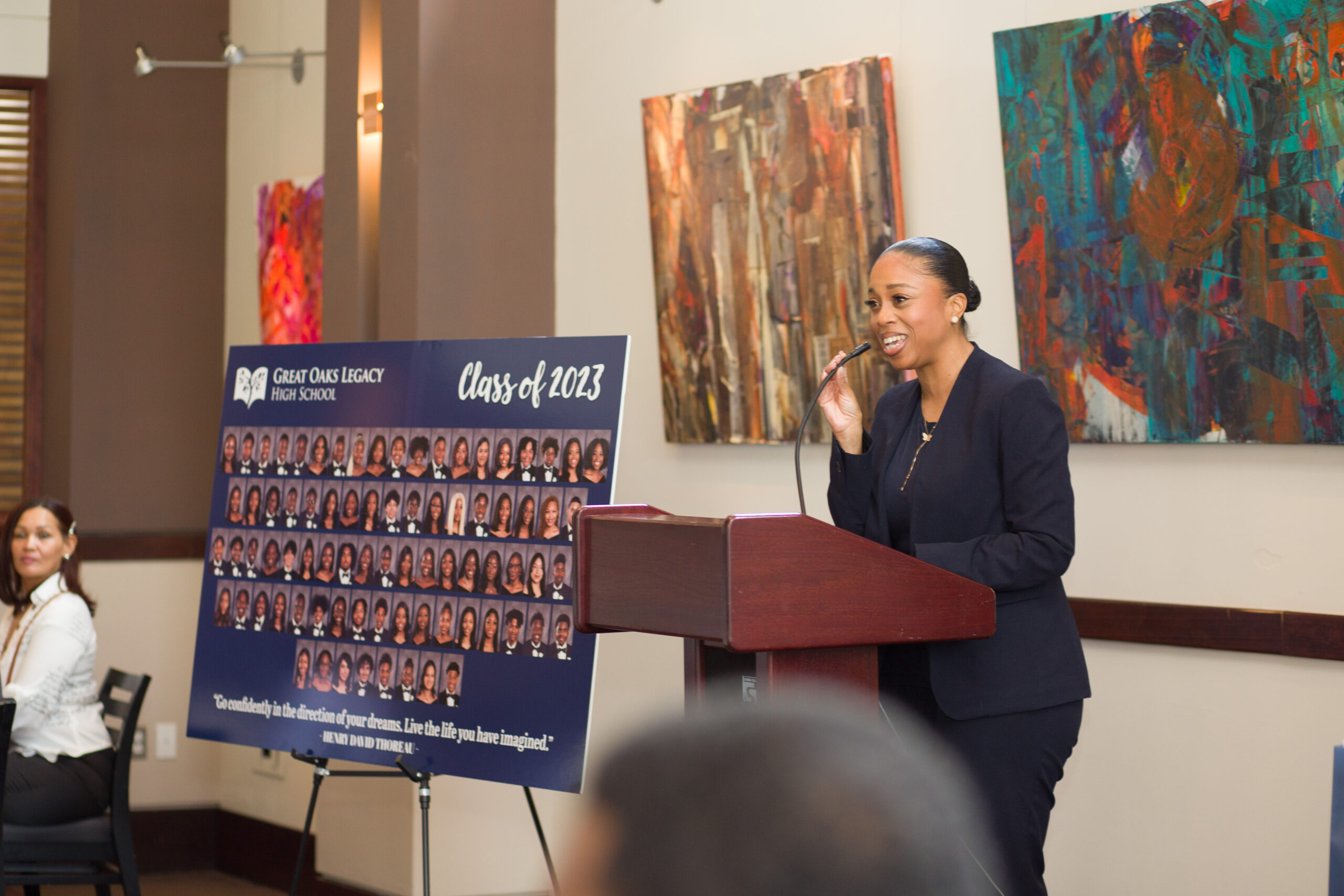
New Jersey’s State-Run Mental Health Services Hub System for Students Is Alive and Well
May 8, 2023
Newark’s Great Oaks Legacy Charter Celebrates 100% College Applications
May 8, 2023GASWIRTH: Union-Led Collective Bargaining Is Great for Teachers But How About Students?
Dr. Marc Gaswirth is a retired public school administrator who has written extensively for more than 40 years about public sector bargaining and school human resources.
Rarely does any level of government, including our own state government, closely examine whether longstanding policy goals undermine or even conflict with one another. For this task to be undertaken seriously, with integrity and objectivity since it is never clear what might be discovered, considerable political coverage is required. Two policy goals possibly in tension would be collective bargaining protections for school employees and greater positive outcomes for students. They certainly co-exist, but has each fulfilled its intended overriding objective?
The collective bargaining process serves several purposes. The first elevates the role of labor organizations allowing them to exert greater power and influence, which otherwise would not be available to them. The next makes available the means and resources to better handle school board-teacher union disagreements during negotiations and during the life of the labor contract. Perhaps most importantly, the third levels the playing field so that employee organizations and school boards have co-equal power to set the terms and conditions of employment.
How Did We Get Here?
First, some background: the New Jersey Public Employer and Employee Relations took effect in 1968. Prior to its passage, a study commission held hearings to determine ways in which the interests of public employers and public employee could be managed and reconciled through a process then called “collective negotiations” in which teachers’ unions once legally recognized could enter into binding labor agreements with local school boards.
The law applied not only to most school employees but to most public employees working at the state, county and local level. The prevailing thought was to create a working paradigm where public employees through their unions would directly and legally participate in matters affecting their salaries, benefits and other matters affecting their employment. It was based on the belief that this process would lessen the likelihood of conflict between governmental entities and their employees and ensure the uninterrupted delivery of public services. It seemed a reasonable solution to mitigate increased public employee restiveness at that time, especially among school employees. Since preserving labor peace was its primary focus, the commission paid less attention to whether, and how, the process could affect the rights of students to receive a quality public education guaranteed by the state’s constitution.
What Is the Impact on Taxpayer Wallets and Student Academic Growth?
Fast forward to the current date and the public continues to receive myriad services paid by their tax dollars that organized public employees provide throughout the state. After a period of heightened teacher militancy in the first few decades following the law’s enactment, thousands of labor contracts are negotiated annually and settled with little, if any, inconvenience to the public, a strong indication that this process established more than a half-century ago has worked, though some would argue at considerable cost to the state’s taxpayers.
Since the law’s enactment and subsequent amendments made to it, one critical issue that has not been carefully studied and left unsettled is whether the negotiations process as it has evolved now for decades has played a constructive role in improving students’ educational prospects. There has been neither much research to prove or disprove this intriguing and challenging proposition, nor any serious discussion about it among politicians, various education interest groups or the academic community. There is good reason to believe for a number of reasons that these two concurrent policy objectives—ensure school employee rights through union representation and increase student achievement—-may not align.
Is There a Better Way?
Let’s start with several provocative questions? 1) Does a labor agreement alter the way school employees think and work and if so, does it inure to the benefit of employees only or as well to students?; 2) Do these agreements substantially restrict school boards as local government entities from having the necessary resources to effectively and efficiently deliver services to students?; 3) Has the process markedly increased costs to operate school districts; and 4) Is there a better compensation model to ensure that school employees receive fair salaries, competitive benefits, and reasonable job security guarantees?
These complex questions yield no quick or easy answers, and this column does not intend to generate any sort of large consensus. But like the current effort to address the purported state teacher shortage for which a study group’s final report has not yet been released, the state government also has not just a passing curiosity but a corresponding responsibility to investigate what impact, if any, labor agreements might have had on student learning.
The major obstacle to overcome is the lack of political will to address the issue. With the leverage to discourage or block any serious examination of this subject, the teacher unions will likely press the state’s major power players—the governor, the state legislature, the state board of education and the education commissioner—not to endorse or commit resources to this effort based ostensibly on a widely-accepted notion that the bargaining process has worked well for both school employees and students despite little evidence to show for it..
There is ample documentation available to show that there has been substantial growth in school employees’ salaries and benefits granted contractually and legislatively since the late 1960’s.
We can safely assume that bestowing greater rights and benefits to school employees will encourage them to act in different ways, not necessarily always to the advantage of those they are charged with helping. Increased employment gains will alter their decision-making since granting a new benefit conveys an implied right to use it. So each time a labor contract or law proffers a new or improved benefit, expect most employees eventually to avail themselves of it.
What Courageous School Leaders Could Tell You
Moving to a related topic, there has been a discomfiting quietude, a conspicuous silence among school administrators about the impact of labor agreements on the operation and administration of school systems. These education leaders include school superintendents, district-level personnel directors, plus middle-level managers, i.e., school-level administrators who directly benefit from the process because they too have the same bargaining rights as those they supervise.
While the state superintendents group seems primarily focused on its members’ financial and job security interests, state funding levels, excessive administrative regulations, its own revenue stream and opposing school district regionalization, it expresses few concerns about contractual gains and legislative changes that detract or limit the authority of school district leaders to lead their school districts. The association does not directly challenge at least publicly the powerful New Jersey Education Association, instead preferring to find common ground with it on other issues.
Other than being concerned about running afoul of their communities or local school boards for making important but controversial decisions, chief school administrators do not want to be accused of being labeled anti-union or anti-teacher.
Were they willing to speak out without fear of reprisal and repercussions—by the way, an act requiring enormous personal and professional courage—these frontline professionals could describe in excruciating and distressing detail how certain bargaining provisions frustrate their ability to manage the schools and delivery critical services to students.
They could tell you about the daily impact of addressing staff absenteeism by citing numerous liberal paid leave allowances that labor contracts and the law provide school employees, the difficulties faced when not enough substitutes can be found to fill vacancies, and the resultant impact this has on school order and instruction. They could detail difficulties in filling vacant positions because contractual restrictions limit how much a new teacher in an area of serious need can be paid. They could further substantiate that additional compensation paid for more academic credits and degrees show little, if any, confection, to quality instruction, and that these funds could be used for other purposes including financial incentives to hire needed staff or reward outstanding ones or for the purchase of new textbooks and computers or to replace an old school furnace. And, if they were really forthright, they could tell you that the current teacher evaluation system, touted by many as fair, objective and meaningful, is terribly time-consuming and doesn’t necessarily reveal the inadequacies of some staff members.
The reluctance of these leaders to speak publicly about these topics or at least insist that their state organization regularly does is a serious omission in the needed conversation about one, among other casual factors adversely affecting school districts and the students they are suppose to serve. Doing so would expose a hidden truth that collective bargaining outcomes, while necessary and appropriate for school employees, have not always promoted and advanced students’ interests
Nearly every school district in the state has already gone through the collective bargaining process with its professional staff about 15 to 20 times in the past five decades ago. What we don’t know, and will never know unless we have the courage to find out is whether during this time students have benefited as much from the process as school employees have.





1 Comment
I’ll never get that time back.